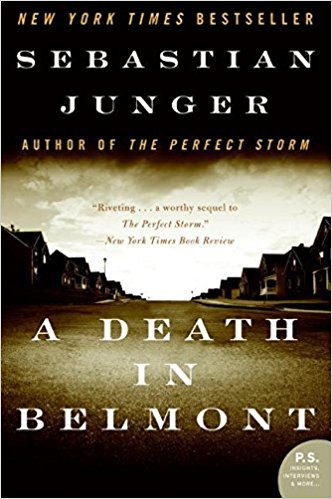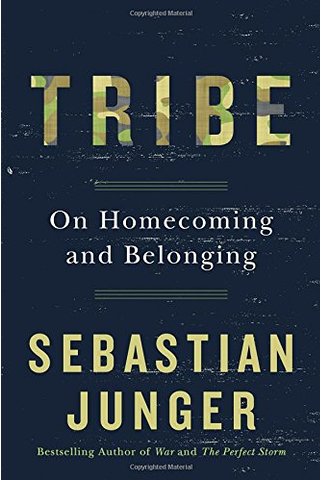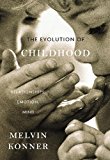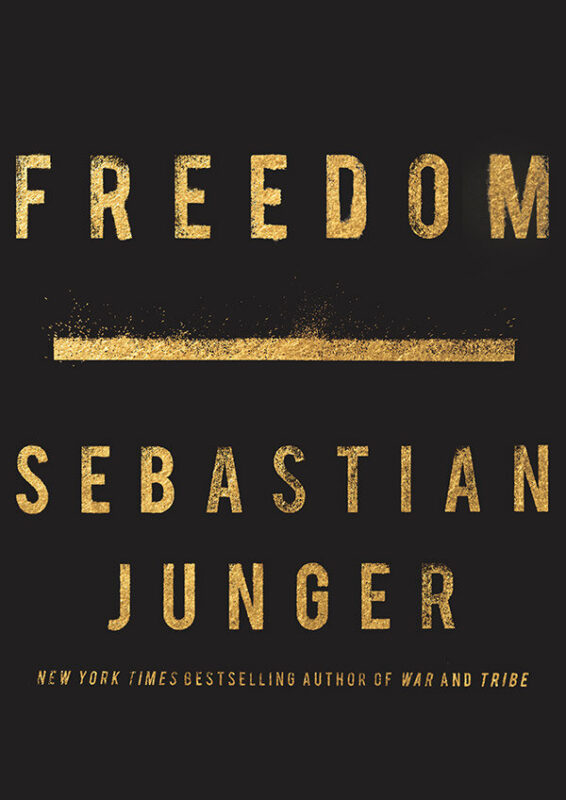
From the acclaimed author of A Perfect Storm comes a powerful chronicle of three lives that collide in the vortex of one of America's most controversial serial murder cases.
In the spring of 1963, the quiet suburb of Belmont, Massachusetts, is rocked by a shocking murder that fits the pattern of the infamous Boston Strangler, still at large. Hoping for a break in the case, the police arrest Roy Smith, a black ex-con whom the victim hired to clean her house. Smith is hastily convicted of the murder, but the Strangler's terror continues. And through it all, one man escapes the scrutiny of the police: a carpenter working at the time at the Belmont home of young Sebastian Junger and his parents—a man named Albert
Imagine how strange and frightening it would be to see a picture of yourself, not quite a year old, with your mother and two men, one of whom is a confessed serial killer. This is what happened to Sebastian Junger, and only a small part of what he recounts in A Death in Belmont.
The quiet suburb of Belmont, Massacuusetts, is in the grip of fear. The Boston Strangler murders have taken place nearby, and now there is another shocking sex crime, right in Belmont. The victim is Bessie Goldberg, a middle-aged woman who had hired a cleaning man to help out around the house on that fall day in 1963. He is a black man named Roy Smith. He did the appointed chores, collected his money and left a receipt on the kitchen table. Neighbors will say that he looked furtive when he walked down the street, that he was in a hurry, that he stopped to buy cigarettes, that he looked over his shoulder. They didn’t see a black man in Belmont very often, so, of course, they noticed him. So the story went, and on these slender threads, and his own checkered history, Roy Smith is convicted of the Belmont murder and sent to prison.
On the day of the murder, Albert DeSalvo, an Italian-American handyman, is also in Belmont, working as a carpenter in the Junger home, where the picture is taken. Two years after his work for the Jungers, he confesses in vivid detail to the crimes of which the Boston Strangler is accused, and sent to prison, where he is stabbed to death by an inmate. But he never confesses to the Bessie Goldberg murder. Could he have left the Junger home, committed the murder a few blocks away and calmly returned to finish his day’s work? Could Roy Smith really have been the guilty party, even though his sentence was commuted after De Salvo confessed?
In the grand tradition of his bestselling The Perfect Storm, Junger tells a terrific story, lining up all the elements, asking all the pertinent questions, digging into the backgrounds of both men, retelling his mother’s very strange encounter with Albert when she is home alone with Sebastian. He then asks the larger questions: Was Roy Smith convicted summarily because he was black? Was Albert De Salvo really the Boston Strangler?
Junger cannot answer all the questions, as no one can. Without DNA, there is no way to be certain of which of the two men might have committed the rape and murder of Bessie Goldberg, or if neither of them is guilty. While it is frustrating not to know for sure, the story is fascinating, reads like a tautly plotted mystery thriller, and Junger’s close connection is downright creepy. –Valerie Ryan –This text refers to the Library Binding edition.








Recent Comments